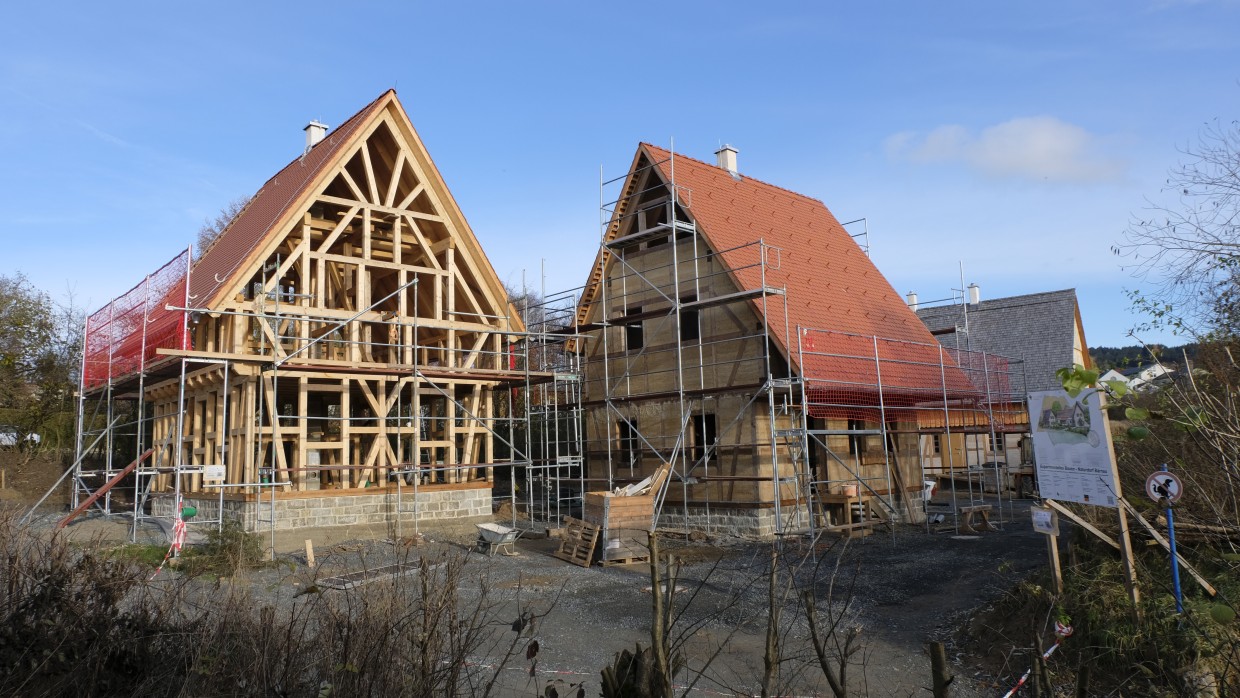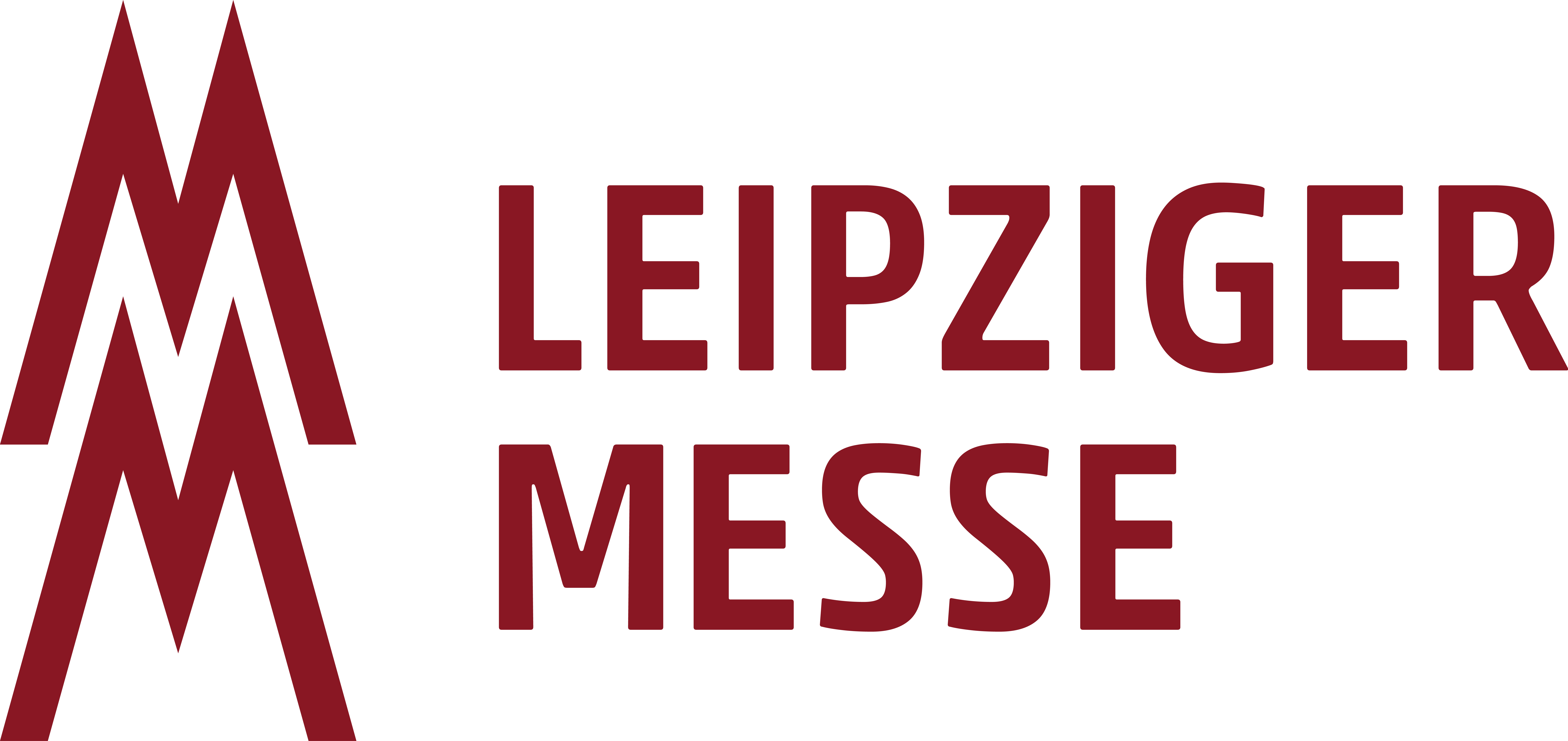News
News
denkmal builds...: Sustainable timber framing in the Naturdorf Bärnau
Sustainable construction using pre-industrial techniques and regional resources - the Naturdorf Bärnau wants to show how this can be achieved. Four experimental buildings are being constructed here for tourist purposes. Most of the work is being carried out by journeymen, who will take the knowledge gained in Bärnau with them for their future careers. The aim is to rethink building culture and architectural language - in favour of less industrial solutions and more craftsmanship.
"Half-timbered construction is Europe!" When Andreas Mann talks about traditional building methods, he goes into raptures. Whether it's ecological benefits or cultural ties - the master stonemason and sculptor believes it's worth taking a look back. He is the driving force behind the "Naturdorf Bärnau" project, a construction project for four half-timbered houses using medieval techniques and regional materials. The project is linked to the Bärnau-Tachov History Park, a large medieval open-air museum on the Bavarian-Czech border, where visitors can experience daily life in centuries gone by. Work on an archaeological castle construction site has been underway there since 2017 - an idea that brought Andreas Mann to the Upper Palatinate during his time as an apprentice. When the sponsoring association planned to have four tiny houses built for tourist purposes, Mann and his travelling companions got in touch and committed to taking the project to the next level. No sooner said than done - the journeymen set to work with the aim of creating four experimental buildings based on historical construction methods that would also be climate-neutral.
The conditions were ideal, as the region around Bärnau is full of building materials, especially wood. The learning effect set in quickly, explains Andreas Mann: "In the past, all cultures actually built in a similar way - before industry, the houses of all cultures consisted of wood, lime, stone, clay and a fibre material. We were able to procure all of this here and made sure that everything was not pre-processed industrially. In this way, we were able to keep grey energy - which today is mainly generated in the form of fossil fuels - low and replace it with human labour, i.e. renewable energy." In keeping with the spirit of craftsmanship, a lot of experimentation went into realising the building. For example, the foundations were not poured with cement, but were built on the basis of Roman concrete - i.e. tamped lime mortar. This rediscovered approach is now being scientifically analysed. The nature village is working closely with Regenburg University of Applied Sciences (OTH Regenburg) in the field of materials science, and Amberg-Weiden University of Applied Sciences is also supporting the construction site as an innovative learning centre and allowing students to observe both the sustainable construction approach and medieval life in the village. "That's what makes things conceivable in the first place - people have to experience things in order to change their behaviour. The 15th article about how bad everything is often doesn't trigger the urge to take action," says Andreas Mann, describing the interactive approach.
In the meantime, four shell buildings have been completed in stages on the site. While some of the insulation and electrical installations have already been completed on the first one, the last one only has the timber frame and roof. In two years, everything could be ready for occupancy - but as is so often the case, this is not set in stone. The nature village recently experienced a construction freeze as costs rose unexpectedly and new investors first had to be found. While up to 14 journeymen used to work on the construction site, Andreas Mann is currently the sole site manager. However, this will soon change, new funds are on the way - partly from investors, partly from a state subsidy - and construction will continue in the autumn. The stonemason is already looking for support for the winter: "The big carpentry jobs are done. Now it's time to build furniture. Carpenters who want to build solid wood furniture are welcome and can learn from us at the same time. The same applies to clay and lime plasterers." Offering work, taking experience with you - this is not only the basic idea behind the travelling company, but also a lived practice in the Naturdorf.
Ultimately, Andreas Mann and the Schönberger architecture firm also want to have a lasting influence on building culture and encourage a rethink. According to him, industrial construction has robbed buildings of their uniqueness, "their soul". Instead of "form follows function", the approach should rather be "form follows technology", says Mann: "Working with natural building materials promotes a new architectural language and encourages people to think about being satisfied with less perfectionism. This gives room for handcrafted design and does not necessarily mean a loss, but also a gain - especially in rural areas!" There is an opportunity for new value creation through the use of regional resources. Industrial solutions are often not suitable for the building fabric in old town centres - but repairing the buildings is essential to make rural areas more attractive again and reduce the need for so much construction in cities. The approach practised in the Naturdorf is still too labour-intensive and costly to be implemented on a large scale, Andreas Mann admits. However, serial solutions such as straw bale buildings with wooden frames are conceivable and projects such as the nature village help to lay the foundations for such solutions. A constant dialogue within the industry is crucial for this - so Andreas Mann is all the more looking forward to denkmal and the opportunity to set and experience new impulses for sustainability and climate protection in the preservation of historical monuments and the renovation of old buildings.





